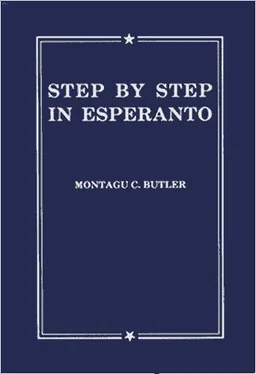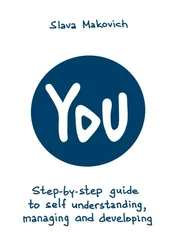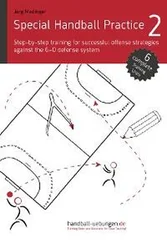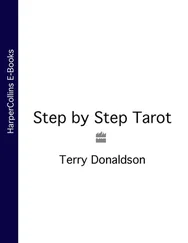59. Between the two countries (there) is a river. The children are among the flowers on the field. Among the branches of the tree is a nest. The bird is in the sky among the clouds. Thorns among the roses. A sheep among wolves. A dialogue between two friends. That is a secret between you and me. Between the mountains is a valley (valo). The nose ( nazo) is between the eyes and the mouth.
60.
| 1 |
unu |
7 |
sep |
| 2 |
du |
8 |
ok |
| 3 |
tri |
9 |
naŭ |
| 4 |
kvar |
10 |
dek |
| 5 |
kvin |
11 |
dek unu |
| 6 |
ses |
12 |
dek du |
Learn these numbers by heart, forwards and backwards. Cp. unison, duet, trio, quartet, quintet, sestet, septet, octet . Naŭis 9 in Welsh and Hindustani! Dekis found in Decalogue. 0= nulo.
Unu, du, Where are you?
Tri, kvar, There you are!
Kvin, ses, Answer “Yes”!
Sep, ok Mend your sock!
Naŭ, dek, Wash your neck!
Unu, du, What a to-do!
Tri, kvar, Fingers all tar!
Kvin, ses, Here’s a fine mess!
Sep, ok, Some on your frock!
Naŭ, dek, Rub out each speck!
61. (a) La Dekalogoestas la nomo de la Dek Ordonoj( Commandments ). En la vorto spegulo estas tri silaboj kaj sep literoj (tri vokaloj,kvar konsonantoj). La signifo de la vorto Decapolis estas Dek Urboj. Kio estas la signifo, en la Angla [15]( English ) lingvo, de la vorto spegulo? (En la Angla lingvo …)
(b) One vowel, 2 consonants, 3 letters of the alphabet, 4 motorcars, 5 continents. 6 pockets, 7 fish, 8 jugs, 9 dolls, 10 beds, 11 sheep, 12 girl-guides.
«Kiom da?» = How Many (What Quantity Of)?
62. (a) Kiom dafloroj estas en la vazo? (glasoj … surla tablo? Kiom dasilaboj (literoj, vokaloj, konsonantoj) estas en la vorto ankaŭ ? Kiom dapersonoj (viroj, virinoj, infanoj, knaboj, knabinoj, fenestroj, lampoj, muroj, plafonoj, pordoj, bildoj) estas en la ĉambro? Kiom da fingroj …sur unu mano (sur du piedoj)?
(b) Kiom estas 6 kaj 3? 10+2? 5+7? 4+8? 3+9?
63. Two roots may be joined into one word. Esperantolando, Esperanto-land. Lampolumo, lamplight. Birdonesto, bird-nest. The first “ o” is usually left out, thus: lamplumo, birdnesto.But it is used if it makes the word easier to pronounce.
64. The meaning of the compound word is seen by splitting it up in reverse order, thus: lumo de lampo, nesto de birdo. Preseraro(= eraro de preso ), a printer’s error, error of printing . Ŝulaĉo(= laĉo por ŝuo, laĉo de ŝuo ), a shoe-lace . Fruktarbo, fruit-tree . Urbdomo, town-hall .
65. The main root stands at the end; the other describes it. Kantbirdois a bird: a song-bird. Birdkantois a song: a bird’s song. Poŝmono(= mono por la poŝo ); monpoŝo(= poŝo por mono ). Ŝipvaporo, ship-steam ; vaporŝipo. Ŝipvelo, a ship’s sail; velŝipo. Vortfino, finvorto. Leterfino, finletero.
66. (a) Arbfolio, litkapo, ŝipnazo, florlingvo, kandelflamo, dompordo, laktokruĉo. Hipopotamo estas riverbesto; hundo estas dombesto. Kontinento estas mondparto. Brako estas korpoparto. Kio estas la preskosto de la bildolibro? Kio estas musiko ? (Ĝi estas preseraro!).
(b) Address-book, love-poem, world-history, organ-music, love-letter, tram-conductor, world’s end, sheep-dog. A tea-leaf in a tea-cup. On the flower-vase is a rose-petal. Guitar-music and a love-song in the moonlight. Apple (cherry-fig-olive-pear-rose‑) tree.
67. Poetedzino (poet-edzino), poet’s wife. Poetinedzo (poetin-edzo), husband of a poetess. Amik-(hero-konkuktor‑) edzino, ‑inedzo.
68. Vesto, article of clothing, garment, dress, etc. Ĉapo kaj ĉapelo estas kapvestoj (vestoj por la kapo). Botojkaj ŝuoj estas piedvestoj.
«Staras», «sidas», «kuŝas»
69. Mi staras, I stand (am-standing). Mi sidas, I sit (am-sitting) . Mi kuŝas, I lie (am-lying) down.
Kion mi faras? What am I doing? (Vi ….) Tom (ŝi, la kato…) staras (sidas, kuŝas). Kion Tom faras? (Li ….) Kion ŝi (ĝi) faras?
(a) Alberto (Mario) staras (sidas) sur la planko (seĝo). Sur kio (kie)li (ŝi) staras (sidas, kuŝas)?
(b) Make similar sentences with La pupo (kato, libro, muziko), staras (sidas, kuŝas) sur la pupitro (skatolo, tablo, valizo). Kion ĝi faras? Kie (sur kio)ĝi ‑as? Ŝi sidas (staras) inter Y kaj Z. Kiom da infanoj sidas (staras)?
«Ordonoj» ( Orders ): «-u»
70. Words of order or request end with ‑U. Staru! Stand! Sidu! Sit! (211). Kuŝu! Lie! Compare Diru al mi( Say to me, Tell me ).
Words of command must end with ‑U:
«Rapidu, vi!» means “Look sharp, you!”
(a) Staru! Kion vi faras? (Ni staras). Sidu! Kion vi faras? Tom kaj Dick! Staru! Kion ili faras? (Ili ambaŭ staras).
71. Other useful orders for class use are
Atentu! Pay Attention! Pensu! Think! Silentu! Be Silent! Aŭskultu! Listen! Legu! Read! Skribu! Write! Envenu! Come in! Rigardu! Look! Traduku! Translate!
(a) Stand there! Lie on the carpet! Write on the board! Look in the box! Read and translate! Pay attention, and think! Make haste, and come in! Be quiet, and listen! The same to you!
72. In English “ g ” is sometimes “hard” (as in go, get ), and sometimes “soft” (as in George, gin ). In Esperanto the plain letter gis hard, but ĝ(with a cap) is soft. Look at the letters G Ĝ,and say Go George! Remember: George wears a cap ! You have already met the letter ĝin the words ĝi, seĝo.
73. Read aloud with the ghard (there is no cap):
Germano algebro geografio
geranio kolegio regimento
and with the ĝsoft (there is a cap):
anĝelo danĝero ĝirafo kaĝo paĝo
Читать дальше












